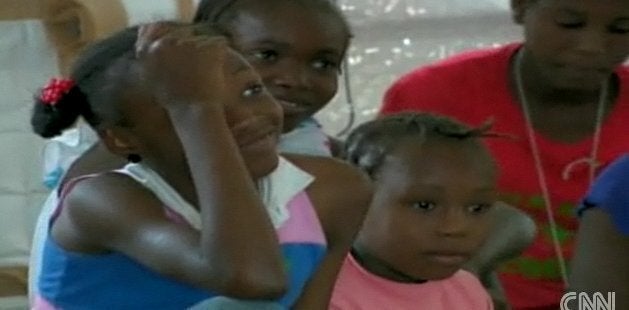
I had to sigh this week when I read that 12 out of 54 Haitian "orphans" airlifted out of that country in January may not, in fact, be orphans at all. The U.S. Government had fast-tracked the immigration process after receiving promises from the children's caregivers, two young and passionate American sisters, that all 54 children were already in the process of being adopted. Now we learn that the sisters, Jamie and Ali McMutrie, did not provide completely accurate information. Some 20 percent of the children they evacuated may not be eligible for adoption. Authorities are now investigating the possibility that they have relatives in Haiti who could care for them.
The story of the Haitian children's airlift follows a pattern we've seen before during times of international crisis. Disaster strikes. The media broadcasts photographs of suffering children. Responding to a concerned public, political leaders bypass accepted protocols by speeding the process of adoption. And then we find out that a significant number of those children might actually have family back home.
These very events happened on a much larger scale in 1975, during the last few weeks of the war in Vietnam. It was early April, and a North Vietnamese offensive had led hundreds of thousands of South Vietnamese to flee their homes. Despite the enormity of the humanitarian crisis, world attention became focused on the fate of a group of Vietnamese children living in foreign-run orphanages. Much like the McMutrie sisters in Port-au-Prince, the young Western orphanage administrators in Saigon made frantic appeals to the international community to help them move their wards out of Vietnam and into adoptive families overseas.
Within the course of a month, between two and three thousand children were evacuated from Saigon on a mission that became known as Operation Babylift. Only later did it become clear that a number of these children--again, as many as twenty percent--were not orphans at all. Some older children told Vietnamese-language interpreters on the U.S. mainland that they had parents in Vietnam, and that they wanted to go home to them. Frightened birthparents, it seemed, had relinquished these children in the last days of war out of fear that the approaching Communists might kill them. By the time the truth came out about the children's families, it was too late. The Babylift kids were quickly placed into adoptive homes. Only a couple of dozen, at most, were ever reunited with birth families, and that was only when those families immigrated to United States and found them.
Having spent the last few years conducting research for a book about Operation Babylift, I am struck by the similarity between this recent story and what happened 35 years ago in Vietnam. However, I also see signs of a growing, and healthy, skepticism about adoption as a solution to the problems facing children in crisis. Even though critics questioned the orphan status of the Vietnamese children in 1975, the adoption process was rushed to completion, which made the possibility of reuniting families nearly impossible.
This time, both Haitian and U.S. government officials have made a conscious effort to slow the process down. The twelve Haitian children with questionable adoption eligibility have been placed in a temporary facility in Pennsylvania, rather than with adoptive families, while officials try to sort out their status. As the children wait, members of the Haitian immigrant community, not prospective adoptive families, are caring for them.
Clearly, the circumstances of the crises are similar, but it seems that our attitudes toward international adoption have changed. Media images of suffering children might stir in us the same impulse to "save" those boys and girls, but we are also more likely to recognize that moving children from one country to another presents sizeable risk to the very people we hope to help. Back in 1975, adoption agency volunteers openly admitted that they had transported huge numbers of children without proper documentation. Indeed, they admitted to forging documents for the sake of moving children quickly out of war-torn Vietnam. By contrast, when a group of American missionaries tried something similar with Haitian children last month, they were arrested. The world has grown more suspicious, and that's a very good thing.
Hasty and dramatic airlifts might feel satisfying and look good on T.V., but they can also cause as much harm as good. When it comes to international adoption, the true humanitarian work is performed through the slow and deliberate attention that experienced professionals give to each child's case, not through hasty rescues performed by people trying to act as Good Samaritans.